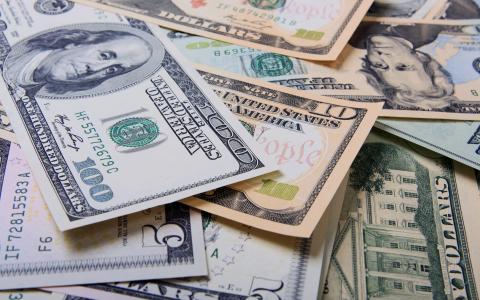
(Reuters) - A key threshold markets link with an end to the Federal Reserve’s wind-down of its asset holdings could be hit sooner than expected, pointing to fresh uncertainty over the endgame for the central bank’s balance sheet normalization process.
According to the most recent New York Fed survey of Wall Street’s biggest banks, the Fed is expected to end the contraction of its holdings of cash and bonds when balances in its reverse repo facility fall to $625 billion. At the same time, banks in the survey also say quantitative tightening, or QT, is likely to stop in the third quarter of next year.
But reverse repos have been shrinking fast and could hit the level Wall Street associates with an end to QT well ahead of the expected end date, raising questions about whether that could mean an earlier-than-expected halt or whether markets and officials again need to reset their outlook.
A key part of the Fed’s rate control toolkit, reverse repos have fallen rapidly this year from a peak of more than $2.5 trillion last December to around $821 billion at the end of last week. Recently the slide is being driven by cash moving off the Fed’s book and into higher-yielding government securities, a process likely to continue given large federal deficits, in the view of market participants.
The Fed has cut its Treasury and mortgage-backed securities holdings by nearly $1.2 trillion since June 2022, a reduction that has occurred alongside its aggressive rate rises, which are its main tool to influence the economy. Fed officials have said repeatedly the effort of cutting their holdings will take quite a bit more time as they seek to withdraw just enough liquidity from the financial system to still keep firm control over short-term rates.
Hitting that point is “well off in the future,” New York Fed President John Williams told reporters last month, adding “it's hard to predict exactly where” that level of liquidity will need to be.
The reverse repo facility is widely viewed as a proxy for excess liquidity that can be easily removed. Closely watched alongside it is the level of bank reserves on deposit at the Fed, and while reverse repos have been diving, reserves have not. As of Wednesday, in fact, they were the highest since April 2022 at nearly $3.5 trillion.
FUZZY ENDGAME
For market participants the reverse repo facility has become closely linked to the end of the balance sheet drawdown, although - the NY Fed's primary dealer survey notwithstanding - some observers believe its usage needs to go to zero before the Fed will end QT.
Some inside the Fed, such as Dallas Fed President Lorie Logan - whose views on the matter are influential as the former chief of New York Fed market operations - lean more to the idea of a full reverse repo drawdown being in the cards before discussion of an end to QT is warranted. That in theory gives the Fed more runway to run down its holdings than the market now sees.
Not everyone agrees.
“We think a strong argument can be made for ending the Fed’s balance sheet runoff before the [reverse repo] facility is fully drained,” analysts at Wrightson ICAP said. That’s because the liquidity parked there can help steady periods of money market volatility, the firm said.
Analysts at TD Securities wrote in a recent note QT will stop in June with a positive reverse repo balance, although they still expect all the cash to eventually come out, presumably on the back of market forces rather than Fed action.
Goldman Sachs economists told clients, meanwhile, they see reverse repos at $400 billion by the middle of next year and at zero by the end of 2024, while noting “one possible consequence of a faster-than-expected decline in [reverse repo] balances is that the Fed may consider winding down QT a quarter or so ahead of our baseline.”
Derek Tang, an economist at research firm L.H. Meyer, said in contrast with the Fed’s view, if there’s some structural level of demand for the facility that keeps money in it, “the Fed needs to revisit its plan” and the level of financial sector liquidity needed to allow the Fed to stop QT could arrive sooner than thought.
By Michael S. Derby
Editing by Dan Burns and Andrea Ricci



